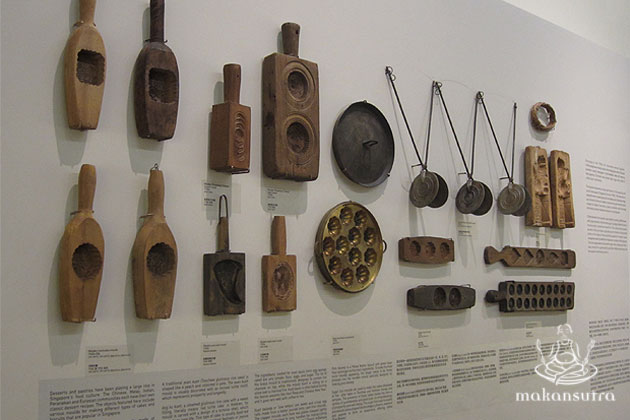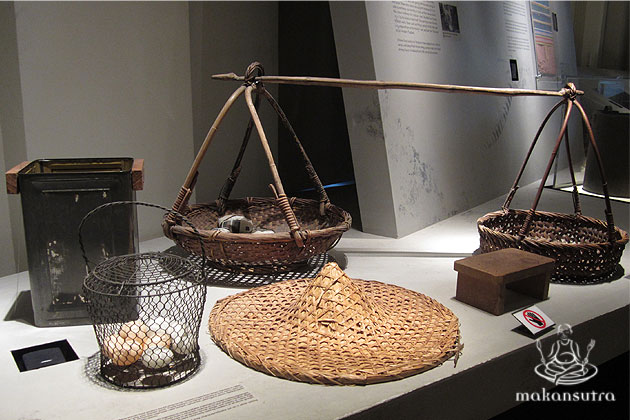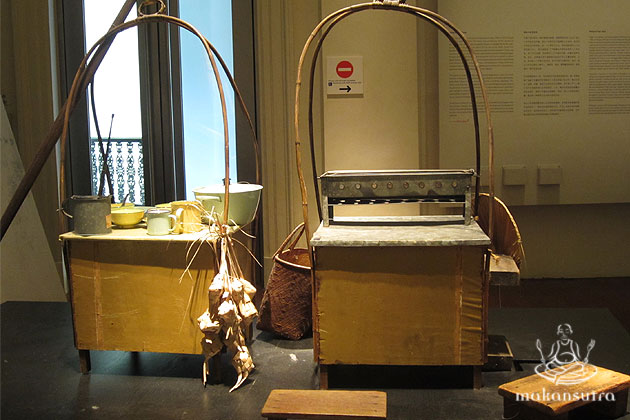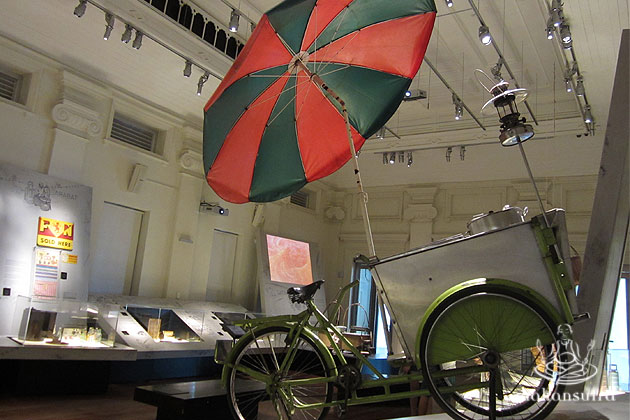
Food Museum and Gallery: Who’s the first Chicken Rice hawker in Singapore?
By Thammika Songkaeo - Tuesday, Oct 14, 2014
Many of us don’t know of or have yet to step into the National Museum of Singapore – a pity of sorts, as the museum is free for those who are citizens and PRs (and a worthy $10 for foreigners), and its location is so central that there is no logistical excuse to avoid it. Now, there’s some bad news of sorts: the Food Gallery has been closed for renovations since Monday, September 29. It’s an unfortunately long period of nothingness for the audience.

The food gallery offered an overview of ten dishes common and special to Singapore, ranging from char kwayteow to roti prata, satay, and, of course, chicken rice. Brief paragraphs explained the history of these dishes, and the information even told us who – you won’t believe this – was the first person to bring chicken rice to Singapore. His name was Wang Yiyuan, and he started off selling chicken rice balls wrapped in banana leaves as an itinerant hawker in the 1920s, according to the gallery. We also find out why Kueh Tu Tu is called such. According to the gallery, “tutu” was the sound that the seller’s instrument made when he used to hawk the kueh. Now, we can’t say that we believe fully in this information because there’s no clear argument for why other theories – such as “tutu” being a deviation of “putu” (another popular and similar kueh) – aren’t true, but hey, at least we’re fed another idea.


In addition to quick written histories, we also saw videos of old Singapore – both with actual and dramatized footage – and they were simply mind-boggling, especially for the younger people. We heard accounts of a Singapore very foreign to them. Older folks in the videos recounted how cows were dragged along dirt-ridden kampong pathways to deliver fresh milk to customers. A dramatized father-son pairalso showed that passing on food knowledge in the past came not with the approach in today’s fun cooking schools, but rather, it came withsome scary silence. The young boy, barely six years old, had to prove to his father that he had memorized all the ingredients of Bak Kut Teh. He also had to know where each was located in the cupboard, whose drawers all looked alike. Such scenes – of fresh cow milk and young culinary consciousness – have become as removed as our affinity for the old school Knickerbocker Glory (“The what?” you ask.)

Although we’re sad that the gallery won’t be around for others to see now, we’re also hoping that the renovations will be worth it. Here’s our wish list: that it is made relevant for today’s audience, many of whom can’t differentiate lor mee from Hainan beef kway teow. It should be made more fun, connecting to them like how Instagram and other online social media do. And please, includes lots of huge delicious pictures. Sure, keep that old Kueh Tu Tu cart artefact, but make it interactive, allow hands-on cooking and handling. Singapore’s food culture is more than that platter pot of ten dishes, and there’s some dubitable matter that we hope will be explained further in its rebirth. It should celebrate our food culture, not just showcase it, especially so when it will resurface in the midst of our SG50 celebrations next year.

And hey, it would be nice if the eateries there offered a sense of what you hawk at the new Food Gallery. It would make this exhibition and experience, truly multi-sensory.


